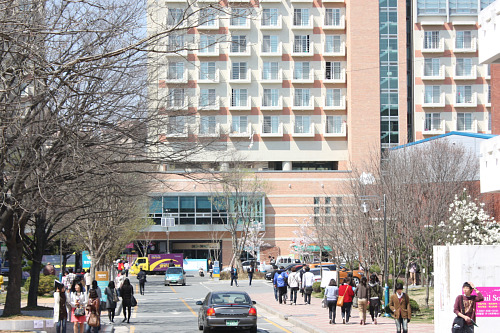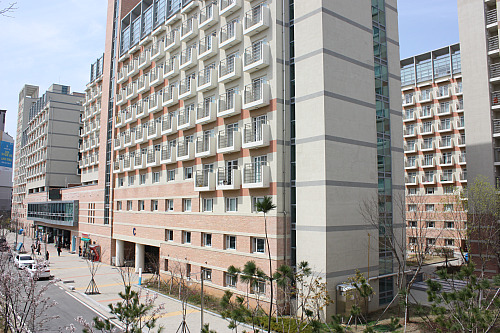BTL생활관 입주자 선정 기준 재검토 필요

The application progresses in stages. First, students who have been living in the residence apply for a filing extension of their room, and then the new residence application begins. If the number of the applicants exceeds capacity, they are sorted by a set of rules, the grades of enrolled students and the order of receipt for freshmen. In the case of enrolled students, it is reasonable to order the waiting list by their grades. However, theoretically, students who live farther from campus but have lower grades can be ousted by students living closer to campus with higher grades under the current standards. Some students pointed out that the purpose of a school dormitory is to offer a more convenient school life for those who cannot live at home during semesters.

A view of the main builidng of BTL Residence Hall, CNU
On this matter, the BTL dormitory administration explained that they have difficulty giving proper advantages to some students due to distance as an application qualification. The numbering procedure progressed only with students who live outside of Gwangju Metropolitan City, therefore every student on the waiting list that lives far from campus is in the same situation. When asked about any difference between residential provinces, the BTL administration answered by calling attention to the difficulty of setting priorities: it is not simple to grade distances. What is a fair measurement? Straight-line distance or the time required to come to campus? That is why the students’ home locations are only used as a qualification not a selection standard.
How about for international students, then? Residence application of exchange students and the students taking Korean language courses in the Language Education Center are managed separately from Korean students, with formal requests from related departments. It is natural that foreign students find it more difficult to live on their own in Korea; therefore the university provides a special favor in consideration for them. However, as much as it is obvious that limited supplies cannot keep up with rising demand, it is natural that the students on the waiting list are curious about the numbering procedure.
As it is the first time the BTL had an excessive number of applicants and had to build up a waiting list, it is true that the policy is not yet fully established. Since the demand for BTL residence is not expected to decrease, it is required to establish firm and detailed guidelines and acceptable selection standards before the next application round begins. Though it might not be easy to make the rules, more specific and multilateral standards are essential for the selection to be fair. Comprehensive and meticulous discussion is expected. More reasonable standards and adequate countermeasures need to be prepared before the start of next semester.

